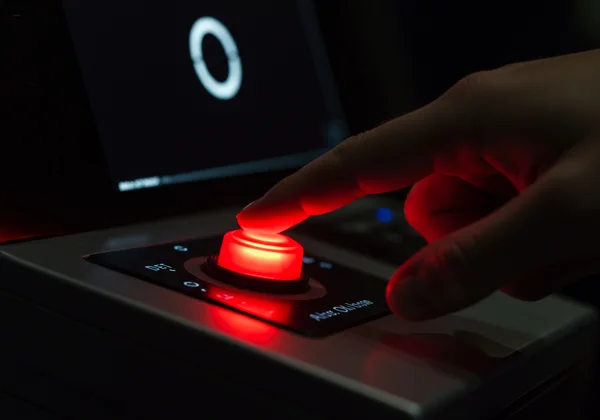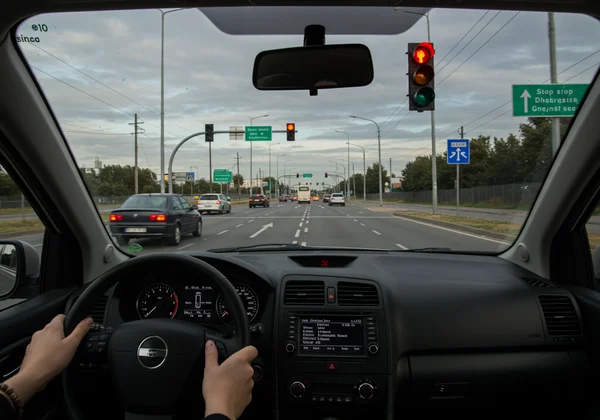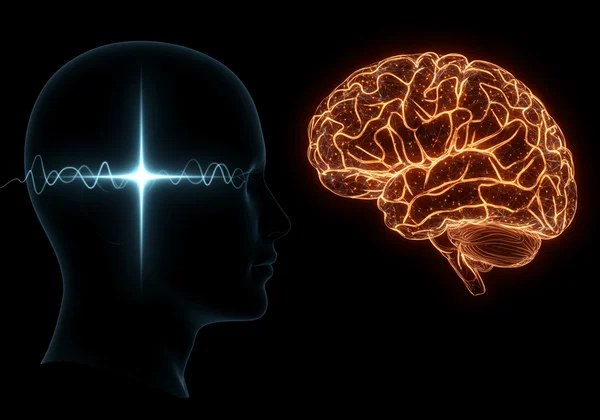Simple vs. Choice Reaction Time: Your Ultimate Reaction Time Test for Speed & Cognition
Understanding your reaction time test is more than just knowing how fast you click. It's about unraveling the intricate workings of your brain and its response to the world around you. Are all fast reactions the same? Not at all. Distinguishing between simple reaction time and choice reaction time is crucial for anyone looking to optimize their cognitive speed, whether you're a competitive gamer aiming for lightning-fast reflexes, an athlete seeking a performance edge, or simply a health-conscious individual keen on maintaining mental sharpness. Ready to discover your speed? Test your reaction speed today.
What is Simple Reaction Time?
At its core, simple reaction time is the quickest response to a single, predictable stimulus. Think of it as your brain's most direct and automatic response pathway. There's no decision-making involved—just an immediate, pre-programmed action.
The Basics of an Automatic Response
An automatic response occurs when you react to a single stimulus with a single, predetermined action. For instance, if you're told to press a button the moment you see a light flash, your brain doesn't need to choose between multiple actions or stimuli. It simply detects the light and triggers the pre-assigned motor command. This makes simple reaction times generally much faster than their choice counterparts, reflecting a direct neural pathway. This is what you measure when you do a standard reaction speed test.

Visual vs. Auditory Simple Reactions: Which is Faster?
When it comes to visual vs. auditory simple reactions, there's a fascinating difference. Generally, humans react faster to auditory stimuli than to visual stimuli. This is because sound waves typically reach the brain and are processed faster than light signals. For example, if you're asked to click when you hear a beep versus when you see a flash, your reflex test will likely show a quicker response to the sound. This difference in human reaction time highlights how different sensory inputs are processed at varying speeds by your central nervous system. Curious about your own auditory-visual comparison? A specialized reaction time trainer can help you explore this.
Exploring Choice Reaction Time & Decision Making
In contrast to the simplicity of an automatic response, choice reaction time introduces complexity and, crucially, decision making. This type of reaction involves multiple stimuli and requires you to select the correct response from several options.
Beyond Reflexes: When Decisions Matter
Beyond reflexes: when decisions matter highlights the essence of choice reaction time. It's not just about reacting; it's about processing information, evaluating options, and then executing the appropriate action. For instance, in a game, you might see an enemy, but you then need to decide whether to shoot, dodge, or use a special ability. This cognitive processing significantly adds to the overall reaction time, making it a truer measure of your cognitive speed in dynamic situations. This type of test goes beyond a simple click test, involving more complex mental processing.
Everyday Examples: From Driving to Debating
Choice reaction time is constantly at play in our daily lives. Consider driving: you see a traffic light change from yellow to red, and you must quickly decide whether to hit the brakes or accelerate through the intersection, depending on your speed and distance. In sports, a tennis player might see an opponent's serve and has to rapidly decide whether to hit a forehand or a backhand return. Even in a conversation, your ability to respond quickly and appropriately to a question is a form of complex decisions under pressure. These scenarios demonstrate why an effective reaction time trainer needs to simulate various decision-making contexts.

The Neurological Basis: Why Simple & Choice Differ
The fundamental differences between simple and choice reaction times stem from the distinct neural pathways and cognitive demands involved. Understanding this neurological basis provides valuable insights into how your brain operates.
Brain Pathways: How Your Neurons Respond
In simple reaction time, the signal travels through a relatively direct neural pathway from sensory input (e.g., eye) to the motor cortex, triggering a rapid, almost automatic, response. It's a straight line, minimizing synaptic delays. For choice reaction time, however, the signal must travel to higher brain centers, specifically the frontal lobes, for evaluation and decision-making. This involves more complex brain processing, additional synapses, and the integration of various cognitive functions, all of which add to the total response time.

Processing Load and Its Impact on Speed
The concept of processing load is key to understanding the difference in reaction speeds. Simple reactions have a low processing load; the brain knows exactly what to do. Choice reactions, on the other hand, carry a significantly higher cognitive load. The brain must quickly analyze multiple stimuli, weigh options, access stored knowledge, inhibit incorrect responses, and then initiate the chosen action. This increased demand on mental resources directly impacts the overall speed, making choice reactions inherently slower. Improving this can be a significant advantage in any reaction time game.
Real-World Impact: Optimizing Your Reactions
Understanding simple and choice reaction times isn't just academic; it has profound real-world implications for performance and daily well-being. Knowing the mechanisms allows you to target specific areas for improvement.
Gaining an Edge: Reaction Time for Gamers & Athletes
For the Competitive Gamer and Performance-Oriented Athlete, optimizing reaction time is paramount. In FPS games, the difference between winning and losing a gunfight often comes down to milliseconds of simple reaction time to an enemy appearing. However, it's choice reaction time that determines effective play: quickly deciding where to aim, when to use an ability, or how to react to a sudden flank. Athletes in sports like boxing, tennis, or racing also rely heavily on both types of reactions—quick starts (simple) and rapid, tactical adjustments (choice). Regular reaction time tests can provide invaluable data for tracking progress and identifying areas for improvement. Want to see where you stand? Take a free reaction time test now.

Staying Sharp: Everyday Cognitive Benefits
Even for the Health-Conscious Individual, sharpening both simple and choice reaction times offers significant everyday cognitive benefits. Faster simple reactions can improve your response in unexpected situations, like catching a falling object or reacting to a sudden brake light. Improved choice reaction time enhances your ability to make quick, effective decisions in complex scenarios, from navigating busy intersections to problem-solving at work. These cognitive skills contribute to overall brain health and can help maintain mental agility as you age. Regularly engaging in a reaction time game or online reflex test can be a fun way to keep your brain active.
Sharpen Your Brain: Your Next Steps to Master Reaction Speed
The distinction between simple reaction time and choice reaction time reveals a deeper understanding of how our brains process information and respond to the world. While simple reactions highlight raw speed, choice reactions underscore our cognitive agility and ability to make rapid decisions under pressure. Both are vital for performance, safety, and overall cognitive health.
By consistently measuring your reaction time test and understanding these different facets, you gain valuable insights into your neural capabilities. The good news is that both types of reaction times can be improved through focused training and consistent practice. The first step to sharpening your brain is to know your current baseline. So, why wait? Discover your reaction time with our fast and accurate online tool, track your progress, and embark on your journey to enhance your cognitive speed.
Frequently Asked Questions About Reaction Time Types
What is a good simple vs. choice reaction time?
A typical average reaction time for a simple visual stimulus is around 200-250 milliseconds (ms) for adults. Choice reaction time is inherently slower due to the added cognitive load of decision-making, often ranging from 300-500 ms or more, depending on the complexity of the choices. Elite athletes and professional gamers often exhibit significantly faster times. You can compare your own results on our website when you try our free tool.
Can I improve both simple and choice reaction times?
Yes, absolutely! While genetics play a role, both simple reaction time and choice reaction time can be significantly improved with targeted training. Activities that require quick responses, focused attention, and rapid decision-making, such as video games, sports drills, and specialized reaction time trainer exercises, can enhance your overall reflex test capabilities. Consistent practice is key to seeing improvement.
How do different stimuli (visual, auditory) affect reaction time types?
As discussed, visual auditory reaction times differ. Auditory stimuli generally lead to faster simple reaction times compared to visual stimuli because the brain processes sound quicker. For choice reaction time, the stimulus type can still influence speed, but the primary factor becomes the complexity of the decision required, rather than just the sensory input speed. Our online reaction time test primarily uses visual stimuli for a consistent baseline.
Why is understanding these differences important for my daily life?
Understanding the differences between simple and choice reaction times helps you appreciate the complexity of everyday actions. It sheds light on why some responses are automatic (like flinching) while others require conscious thought (like navigating traffic). This knowledge can empower you to improve specific cognitive skills, enhance safety in situations requiring quick responses, and contribute to your overall cognitive speed and mental agility. Regularly engage your brain; start your test now.